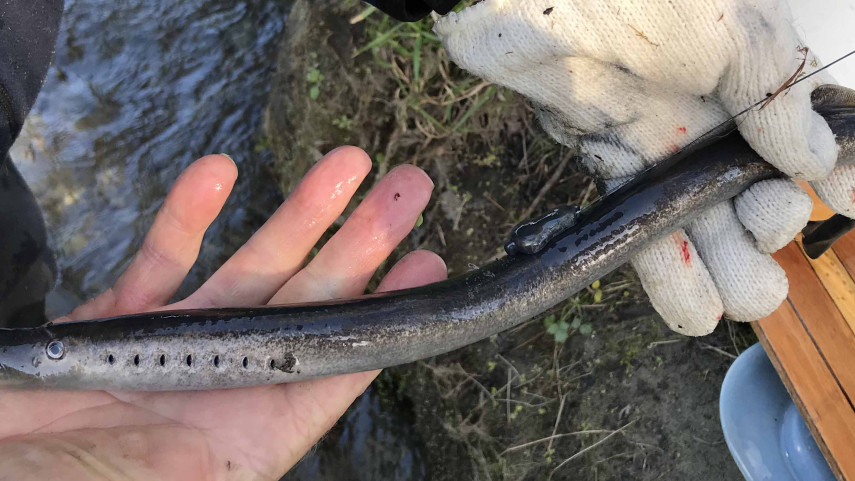
Technology on the trail of rare fish

Share this story
Radio-tracking of a rare native fish is underway to try and solve the mystery of where they are spawning in a city drain.
In 2015 lamprey (piharau or kanakana), a threatened species, were discovered living in high numbers in the Canal Reserve Drain in the Styx River catchment.

NIWA scientists Don Jellyman and Cindy Baker tracking lamprey living in a box drain near Marshlands Rd.
* The lamprey spends most of its life in the sea, where it uses a circular sucker to attach itself to other fish.
* The adults, which are generally between 40 and 60 cm long, spawn in fresh water, and migrate into rivers from the sea to spawn in small headwater streams.
* Adult lamprey do not feed while in fresh water and so are not parasitic on freshwater fish.
Now, along with the Department of Conservation and Environment Canterbury, the Council is supporting efforts by NIWA (the National Institute of Water and Atmospheric Science) to use innovative tagging and tracking technology to find out where the lamprey are laying their eggs.
Nine adult lamprey have so far been fitted with PIT (Passive Integrated Transponder) tags and released back into the drain. Their movements are being monitored using both fixed and a portable hand-held antenna.
The timber-lined box drain is nearing the end of its life and needs to be repaired or replaced, so the tracking data will help inform what the Council decides to do next.
In 2013, NIWA scientists discovered the first lamprey spawning sites in the Southern Hemisphere when the jawless fish were found to spawn beneath boulders in a bush stream on Banks Peninsula. However, Council Waterways Ecologist Greg Burrell says, surprisingly, lamprey may also be using the wooden lining of the drain as a spawning site and they appear to be flourishing in this unusual location.
The monitoring project now underway is of national importance, Mr Burrell says. It uses innovative technology to find out more about a threatened species that is both mysterious and challenging to study due to its secretive nature.
“The NIWA team has been attaching radio tags to the fish to try and find where they are in the drain because this is very unusual habitat for them to be in. It will be nationally significant information if we can find for sure where they are spawning.”
He says the monitoring will continue until next year when hopefully enough information will have been collected.

A lamprey being tagged to allow scientists to track its movements.
Cindy Baker, NIWA Principal Scientist, says the fish won’t spawn for 16 months so it’s a long wait.
When the radio tag batteries die, after 150 days, the scientists will rely on PIT tags to follow them to their spawning habitat.
“The overarching goal is to provide knowledge on what habitats are vital to maintaining lamprey in the drain and look at options for how the Council can upgrade the box lining to protect the lamprey population and the habitats they use while also making the drain more sustainable for the future,” Dr Baker says.
